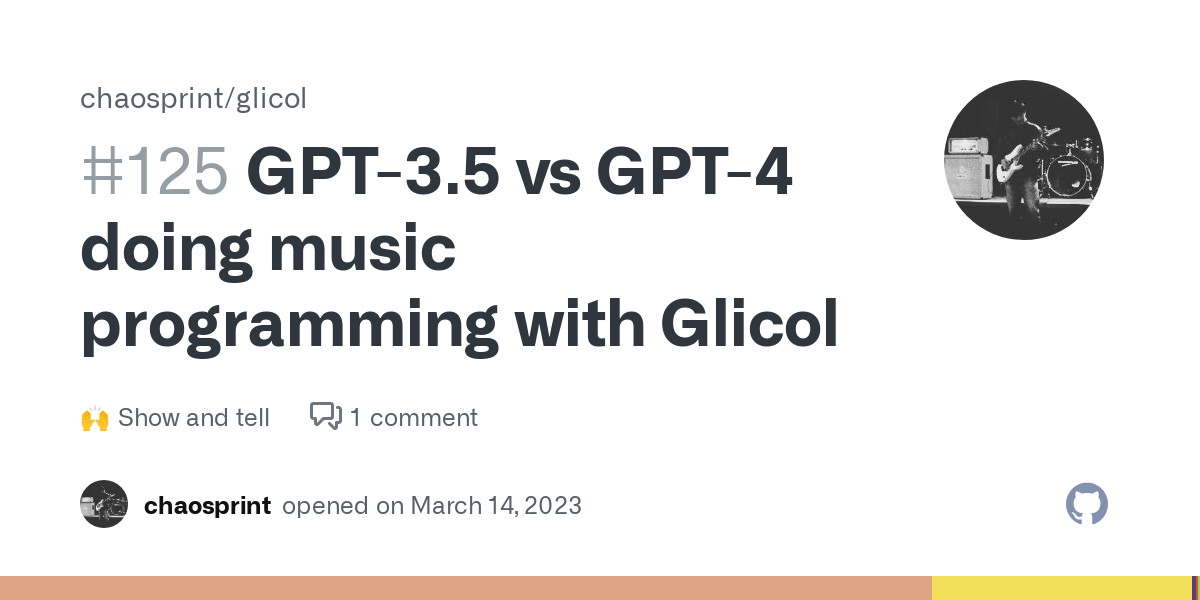GPT-3.5 vs. GPT-4 doing music programming with Glicol

The article written by the authors of Glicol discusses the underlying mechanism behind the successful deployment of distributed data-driven services in production. The authors argue that while traditional centralized software platforms are suitable for many applications, they often lack scalability and robustness when dealing with large datasets and complex user requirements. In order to address this issue, the authors propose a distributed software platform (Glicol) that enables service providers to scale their services without compromising on performance or availability.
Glicol is composed of three components: the data layer, the service layer, and the system layer. In the data layer, Glicol stores data in multiple distributed databases, ensuring that data can be retrieved quickly and reliably. The service layer consists of a set of APIs and RESTful web services that allow developers to rapidly build scalable systems. Finally, the system layer provides an infrastructure layer that allows the service to be hosted in the cloud, eliminating the need for costly hardware purchase and maintenance.
Additionally, Glicol provides users with a set of tools for monitoring and management of distributed services. These tools allow users to track the progress of their services, identify potential issues, and take necessary measures to ensure optimum performance. Furthermore, Glicol also supports integration with existing systems, making it easy for developers to seamlessly integrate their services into enterprise networks.
Overall, Glicol offers significant advantages over traditional centralized software platforms. By providing a distributed platform for building scalable data-driven services, Glicol enables service providers to effectively manage large datasets and complex user requirements. With its comprehensive set of tools, Glicol makes it easier for developers to quickly deploy and manage their services in the cloud, eliminating the cost and complexity associated with hardware management.
Read more here: External Link